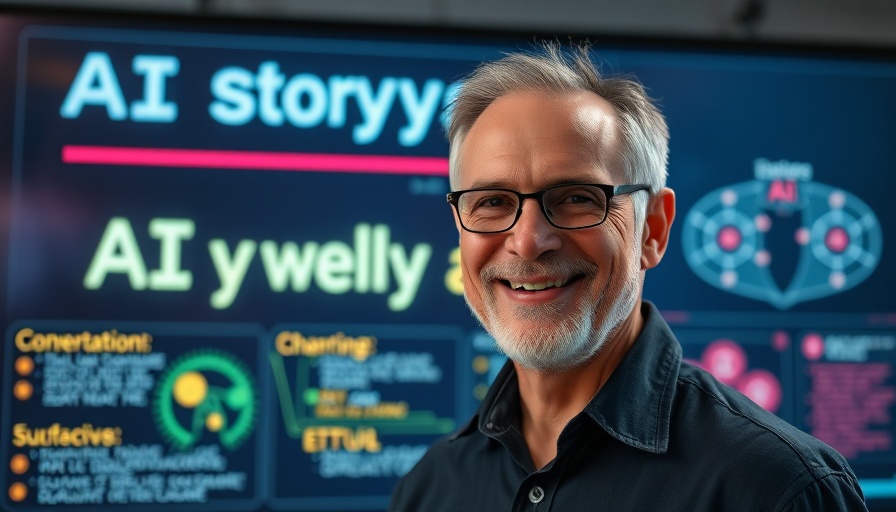
The Future of Storytelling in AI-Driven Narratives
As artificial intelligence (AI) technology continues to advance, a compelling question arises: can a swarm of AI agents collaboratively write the next great novel? Exploring this potential illustrates the nuance and capability of multi-agent pipelines in narrative design—an area where traditional language models (LLMs) often fall short. Even if you don’t intend to utilize AI for your literary endeavors, the concept of multi-agent systems opens doors to solving complex problems in various domains.
In AI Agents: Shaping the Future of Storytelling & AI Narrative Design, the discussion dives into the potential of AI in narrative construction, exploring key insights that sparked deeper analysis on our end.
Understanding the Shortfalls of Traditional AI Storytelling
Current LLMs can effectively produce simple narratives, but they struggle with crafting intricate stories. A significant issue is the context window overflow. As narratives intensify in detail, LLMs risk losing track of vital elements introduced earlier. Despite advancements giving them larger context windows, faults in memory recall persist, leading to inconsistency in storytelling.
Additionally, style drift can occur, where a narrative’s tone shifts unexpectedly. For example, a gripping legal thriller may veer into generic storytelling as an AI model defaults to a common voice. Without a self-critiquing mechanism, these models continuously produce without assessing the integrity of the story, leading to fragmented narratives.
Multi-Agent Pipelines: A Solution for Richer Narratives
Herein lies the promise of multi-agent pipelines. In contrast to vanilla LLMs that primarily predict the next token, an agentic stack employs a more sophisticated strategy. The first stage entails perceiving the environment and strategizing, followed by acting on those strategies.
The self-reflection aspect of these systems is what makes them truly revolutionary. Each agent in the pipeline contributes specialized abilities, such as narrative planning, character development, scene writing, and adherence to a cohesive style. By incorporating distinct roles, the overall storytelling process becomes more systematic.
Breaking Down the Multi-Agent Components
A successful narrative design pipeline could feature five core agents, each responsible for key elements:
- Narrative Planner Agent: Converts prompts into structured beat sheets and thematic goals, ensuring the story maintains focus.
- Character Forge Agent: Crafts detailed character backstories and motivations, storing data externally to avoid context loss.
- Scene Writer Agent: Transforms each narrative beat into prose, ensuring coherence by utilizing the character information from the forge agent.
- Voice Style Agent: Upholds a consistent writing style across the narrative by drawing from a defined corpus.
- Critic Agent: Performs an iterative review of tone, pacing, and plot cohesion, generating adaptive requests to enhance the narrative quality.
The Impact of Multi-Agent Systems on AI Narrative Design
Implementing a multi-agent pipeline overcomes several shortcomings of traditional LLMs. For instance, the context overflow issue is mitigated as narrative elements are preserved externally, allowing agents to pull the necessary components without losing sight of the overarching plot. Furthermore, the voice style agent ensures that the narrative tone remains consistent, quelling the concern of style drift.
Importantly, the critic agent introduces a loop of self-reflection. This iterative process enables AI to adapt and refine its output, substantially enhancing the quality of the final narrative. By fostering a dynamic interaction among agents, the result is a richly woven story that reflects human-like creativity and depth.
Looking Ahead: The Role of AI in Storytelling for Africa
In the context of Africa, the implications of these advancements in storytelling via AI could be profound. Local artists, educators, and business owners stand to gain from embracing AI technologies not only in narrative design but across various industries. As interest in AI policy and governance for Africa grows, it is crucial to engage with local communities to harness AI's potential responsibly.
With the right frameworks in place, the synergy between human creativity and artificial intelligence could reshape how stories are told and shared across Africa. This strategy could lead to broader cultural narratives that resonate with local values and experiences, fostering a stronger sense of identity.
The Path Forward: Why Education and Policy Matter
As we move forward, educating stakeholders about the potentials and challenges of AI will be vital. Ensuring that policy frameworks evolve in tandem with technological advancements will facilitate a healthier adoption of AI in storytelling and other creative fields. Organizations, educators, and policymakers must work together to create environments where AI can flourish, enabling diverse voices to be heard and celebrated.
Ultimately, the future of storytelling in the AI realm is bright, laden with possibilities that promise to enhance how we create and experience narratives. As we delve deeper into this innovative domain, understanding and integrating multi-agent systems will be pivotal for those invested in the arts, technology, and education.
 Add Row
Add Row  Add
Add 




Write A Comment